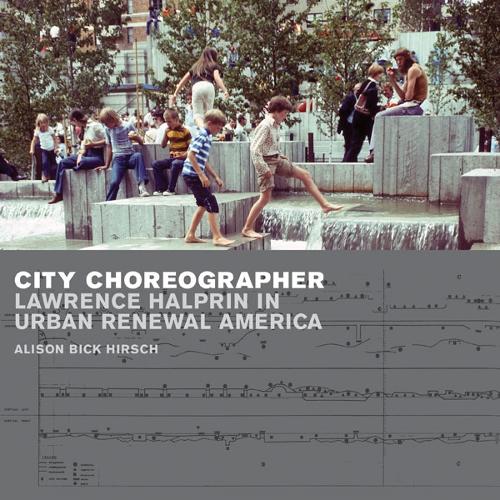
City Choreographer: Lawrence Halprin in Urban Renewal America
(Paperback)
Publishing Details
City Choreographer: Lawrence Halprin in Urban Renewal America
By (Author) Alison Bick Hirsch
University of Minnesota Press
University of Minnesota Press
1st July 2014
United States
Classifications
General
Non Fiction
History of architecture
City and town planning: architectural aspects
Architecture
712.0973
Physical Properties
Paperback
320
Width 38mm, Height 216mm
Description
One of the most prolific and influential landscape architects of the twentieth century, Lawrence Halprin (1916-2009) was best known for the FDR Memorial in Washington, D.C., and Sea Ranch, the iconic planned community in California. These projects, as well as vibrant public spaces throughout the country--from Ghirardelli Square and Market Street in San Francisco to Lovejoy Fountain Park in Portland and Nicollet Mall in Minneapolis--grew out of a participatory design process that was central to Halprin's work and is proving ever more relevant to urban design today.
In "City Choreographer," urban designer and historian Alison Bick Hirsch explains and interprets this creative process, called the RSVP Cycles, referring to the four components: resources, score, valuation, and performance. With access to a vast archive of drawings and documents, Hirsch provides the first close-up look at how Halprin changed our ideas about urban landscapes. As an urban pioneer, he found his frontier in the nation's densely settled metropolitan areas during the 1960s. Blurring the line between observer and participant, he sought a way to bring openness to the rigidly controlled worlds of architectural modernism and urban renewal. With his wife, Anna, a renowned avant-garde dancer and choreographer, Halprin organized workshops involving artists, dancers, and interested citizens that produced "scores," which then informed his designs.
"City Choreographer" situates Halprin within the larger social, artistic, and environmental ferment of the 1960s and 1970s. In doing so, it demonstrates his profound impact on the shape of landscape architecture and his work's widening reach into urban and regional development and contemporary concerns of sustainability.
Reviews
"This is an important study of one of the most significant figures in 20th century landscape architecture and urban design. Alison Bick Hirsch has written the first significant critical assessment of several of Lawrence Halprin's most iconic works nad the historically important and controversial Take Part workshops. With access to his collected papers and both Halprin prior to his death and his wife, the equally important and innovative modern dancer and choreographer, Anna, Hirsch focuses critical attention upon their collaboration and development on urban 'scores' in the tumultuous era of the 1960s and 70s, as well as their dramatic differences." Laurie D. Olin, partner, The OLIN Studio
"The cogent writing and comprehensive research of the first two sections soar, making this book fundamental to future researchers."CHOICE
"Hirschs book has enough distance from its subject and time period that readers may recognize themselves and their own dilemmas in it."Planning Magazine
"Hirschs book contributes to a growing body of historical research interested in activism and social engagement in environmental design fields."Planning Perspectives
"Hirsch has authored a handsome book. . . some of the period photos are delightful, featuring children and adults cavorting in fountains and expressing a collective joy in public gathering."Journal of Planning Education and Research
Author Bio
Alison Bick Hirsch, a landscape and urban designer as well as urban historian and theorist, is assistant professor in landscape architecture at the University of Southern California. She is cofounder and partner of the Foreground design agency, a transdisciplinary practice operating between the fields of architecture, landscape architecture, urbanism, and the visual arts.
